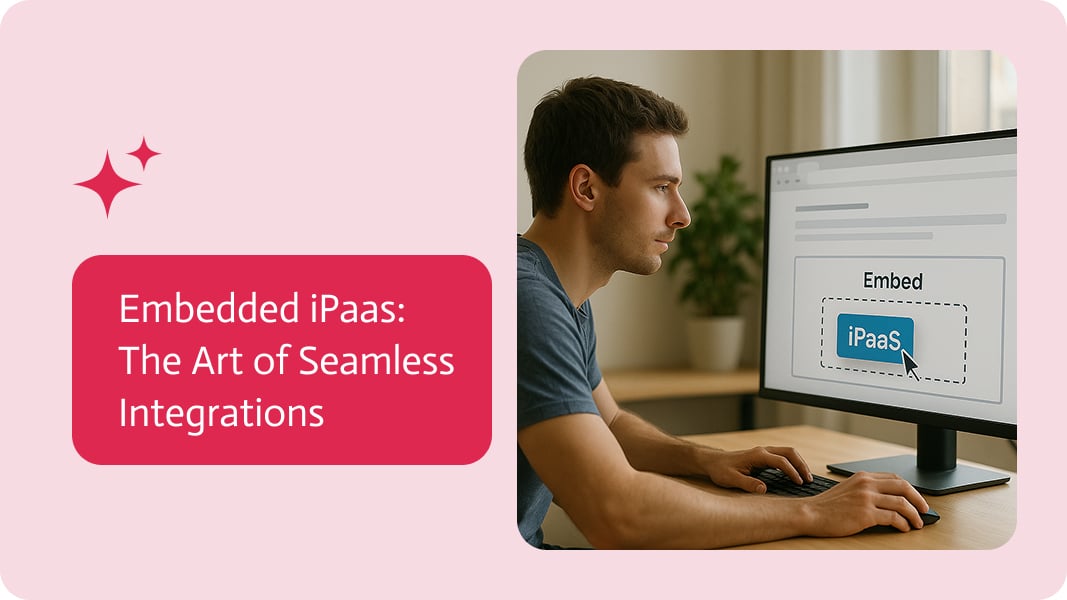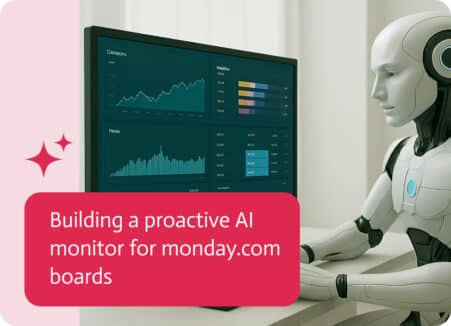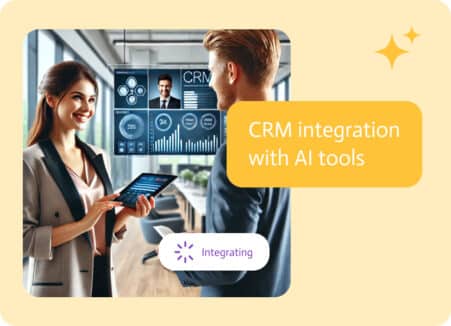

Embedded iPaas: The Art of Seamless Integrations
These days, the idea of smooth software combinations comes up a lot. Companies of all sizes depend on a lot of software to work, and these apps must be able to talk to each other and share data. This is not just a want but a must. Because of this need, a strong new technology called Embedded Integration Platform as a Service, or Embedded iPaaS, has become important.
This thorough study will look at Embedded iPaaS from the start, giving a full review that is useful for both tech experts and people who are new to software combination. We will explain the basics, look at its specific rewards, and describe how it is changing the software world.
The Basics: learning about iPaaS
To really get Embedded iPaaS and what it offers, we first need to know about its ancestor: old-style iPaaS.
What is Traditional iPaaS?
An Integration Platform as a Service (iPaaS) is a set of software tools located on the cloud that enables companies to connect and control combinations between different apps, data sources, and systems. Think of it as a core point for all of a company’s data movement.
Combinations used to take a lot of time and money to create. Custom programming, managing APIs, and regular care were all involved to make sure data moved correctly between different software systems. This was often the job of a company’s own IT or operations teams. An iPaaS makes this easier by providing:
- Ready-Made connectors: These are ready-to-go ties for standard SaaS apps. Instead of creating a combination from scratch, a company can use a ready-made connector to quickly link two apps.
- Easy to see workflow creators: Most iPaaS platforms have an easy to use drag-and-drop design. This lets even people who don’t know much about tech, often called citizen integrators, create and automate data flows without writing hard code.
- One spot to control: An iPaaS gives a single, united dashboard to check, control, and fix all combination flows. This gives a company a clear view of its whole data system.
The main aim of a old style iPaaS is to help a single business make its internal steps smoother, automate jobs, and make sure data is reliable across its own tech.
The way it changed: Introducing Embedded iPaaS
While old style iPaaS changed how companies handle their own internal combinations, a new issue appeared for B2B SaaS (Software as a Service) companies. These companies had to offer their users local combinations to other platforms. For example, a marketing automation platform might want to offer its users a way to sync their contacts directly with Salesforce or a certain accounting software.
Creating these combinations in-house for every possible customer request is a huge task. It’s an ongoing process of:
Each combination needs a large amount of engineering time and money to create, test, and keep up. APIs change, get updated, or are retired. Each time a third-party API changes, the in-house combination needs to be updated, taking engineers away from creating main products. As a SaaS company grows and gets more customers with different combinations needs, the amount of work on the development team becomes too much.
That’s where Embedded iPaaS comes in. An embedded iPaaS is a combination platform created specifically for software companies to put combination abilities right into their own product. It’s an iPaaS for a SaaS company, enabling them to give a local combination feel to their end-users.
Main Difference: Internal vs. External Combination
The main difference between a old style iPaaS and an embedded iPaaS is who is meant to use it and why.
- Old School iPaaS: Used by an organization’s internal teams to automate work for their own business. The combinations are for internal use.
- Embedded iPaaS: Used by a software company’s development teams to create and offer customer-facing combinations within their product. The end-users of these combinations are the SaaS company’s customers.
How Embedded iPaaS Works: A More Detailed Look
For someone who doesn’t know much about tech, an embedded iPaaS works as the engine behind the combination marketplace they see inside a SaaS product. For a tech person, it’s a strong and able platform that takes away the problems of creating and keeping up combinations.
For the person who doesn’t know much about tech:
Imagine you’re using a project control tool. You want to automatically create a new task in your tool each time a new lead is added to your CRM. Instead of leaving the project control tool, you go to a combinations tab. There, you see a list of standard apps, including your CRM. You click on the CRM, follow a few simple steps to connect your account, and with a couple of clicks, you’ve set up the automation.
This smooth feel is what an embedded iPaaS enables. The combination hub feels like a natural part of the project control tool because the embedded iPaaS is white-labeled, it’s made to fit the look, feel, and brand of the host app. The end-user never needs to know that another platform is running the combination.
A platform is not just a tool, from a developer’s view, an embedded iPaaS is a game-changer. It gives a strong and expandable base that handles the hard work of combination creation.
Main Parts & Qualities:
Ready-Made Connectors & United APIs
An embedded iPaaS offers a large group of ready-made connectors for hundreds of standard apps. Some platforms go even further with united APIs, which give a standard way to connect with many apps within a single group. This greatly lowers creation time.
Managed Sign-in
Handling the different sign-in ways for each third-party API is a security and care problem. Embedded iPaaS platforms give a fully controlled sign-in layer, safely storing and renewing tokens, and handling all the hard security rules for the developer.
Expandable Base
As a SaaS product grows, its combinations need to grow. An embedded iPaaS gives an expandable, cloud-based base that can handle a high number of requests and data flows without needing the host company to create and keep up its own combination base.
Easy-to-Use Designer (for Customers)
Many embedded iPaaS solutions offer an embeddable, easy to use workflow designer that can be shown to customers. This enables a SaaS company to let its users create their own custom combinations, further growing the value of the product.
Checking and Error Handling
Combinations sometimes fail because of API rate limits, downtime, or data problems. An embedded iPaaS gives built-in logging, checking dashboards, and automatic retry steps, enabling the host company to quickly find and fix problems, leading to far fewer support requests.
API Combination Control
Developers can use the Embedded iPaaS’s API to control and set up combinations, smoothly weaving them into their product’s existing user feel.
The Business Result and Main rewards
Using embedded iPaaS has a big effect on the business plan and actions of a B2B SaaS company.
- Faster Time to Market
The most important reward is being able to send new combinations to customers in days or weeks, not months. This lets a company quickly answer to market needs and get a lead.
- Focus on Core Product
By giving the problems of combination to a specialized platform, engineering teams don’t have to spend time creating and keeping up combinations. They can spend their time improving the main qualities of the product.
- More Product Stickiness and Customer Keeping
Giving many local combinations makes a product more useful to customers. When a product is combined into a customer’s current steps, it becomes a key part of their tech, growing customer loyalty and lowering loss.
- New Income Sources
Some embedded iPaaS models let a SaaS company make money from its combinations by offering them as a special feature or extra.
- Better User Feel
The white-labeled, in-app part of Embedded iPaaS makes sure a united and easy-to-use experience. Users can start and control combinations without ever leaving the product, creating a more skilled feel.
- Lower Support Costs
With a main dashboard for checking and strong error handling, support teams can more easily fix combination problems, leading to fewer support requests and faster fixing time.
The Future of Embedded iPaaS
The Embedded iPaaS market is growing fast, with an expected CAGR of over 30% in the next few years. The future of this tech is being formed by some key ways:
AI:
Platforms are adding AI to recommend combination plans, improve data flows, and expect possible errors before they occur.
More Automation:
The aim is moving past simple data syncing to hard, multi-step workflow automation, enabling companies to create complex and very custom steps.
Better Security:
As more important data moves through these platforms, vendors are investing heavily in strong security features, including high level coding, following rules like GDPR and HIPAA, and strong control.
Easy to Use for Everyone:
The way toward making combinations easier will keep going, with platforms making it easier for product managers and even end-users to create and change combinations.
Noca’s Contribution
Noca specializes in embedded integration platform as a service (iPaaS), providing an AI-powered, no-code platform with significant integration features. Its drag-and-drop interface lets users quickly build and embed integrations, minimizing the need for coding. Noca is recognized for its user-friendly design, extensive connectivity, and secure, scalable structure.
The platform’s AI automates tasks, making it easier for those without coding skills to use. The no-code interface simplifies integration, letting users create workflows and data mappings visually, cutting down on development time and resources. Instead of coding, users can target designing integration solutions.
Noca’s connectivity is another advantage. It offers many pre-built connectors for linking to common software, databases, and cloud services. Its open API capabilities allow connection to almost any system, even those without pre-built connectors. This adaptability means Noca can handle multiple integration types, from standard software to custom apps.
Noca is made for enterprise-level scalability and security. It can manage large data volumes and complex integrations while having security features, compliance certifications, and debugging tools. These items ensure integrations are secure, reliable, and compliant with industry standards. Features like encryption, access controls, and audit logging offer a secure integration environment. Real-time debugging aids developers in swiftly finding and fixing integration issues, reducing downtime and keeping operations smooth.
Final Thoughts
Embedded iPaaS is a change in how B2B SaaS companies come close to and give combinations. It changes a big engineering problem into a key business thing, enabling companies to give their customers a strong, smooth, and very expandable product. Embedded iPaaS is the future of connected software, a push for new ideas, and a strong driver of business growth.


